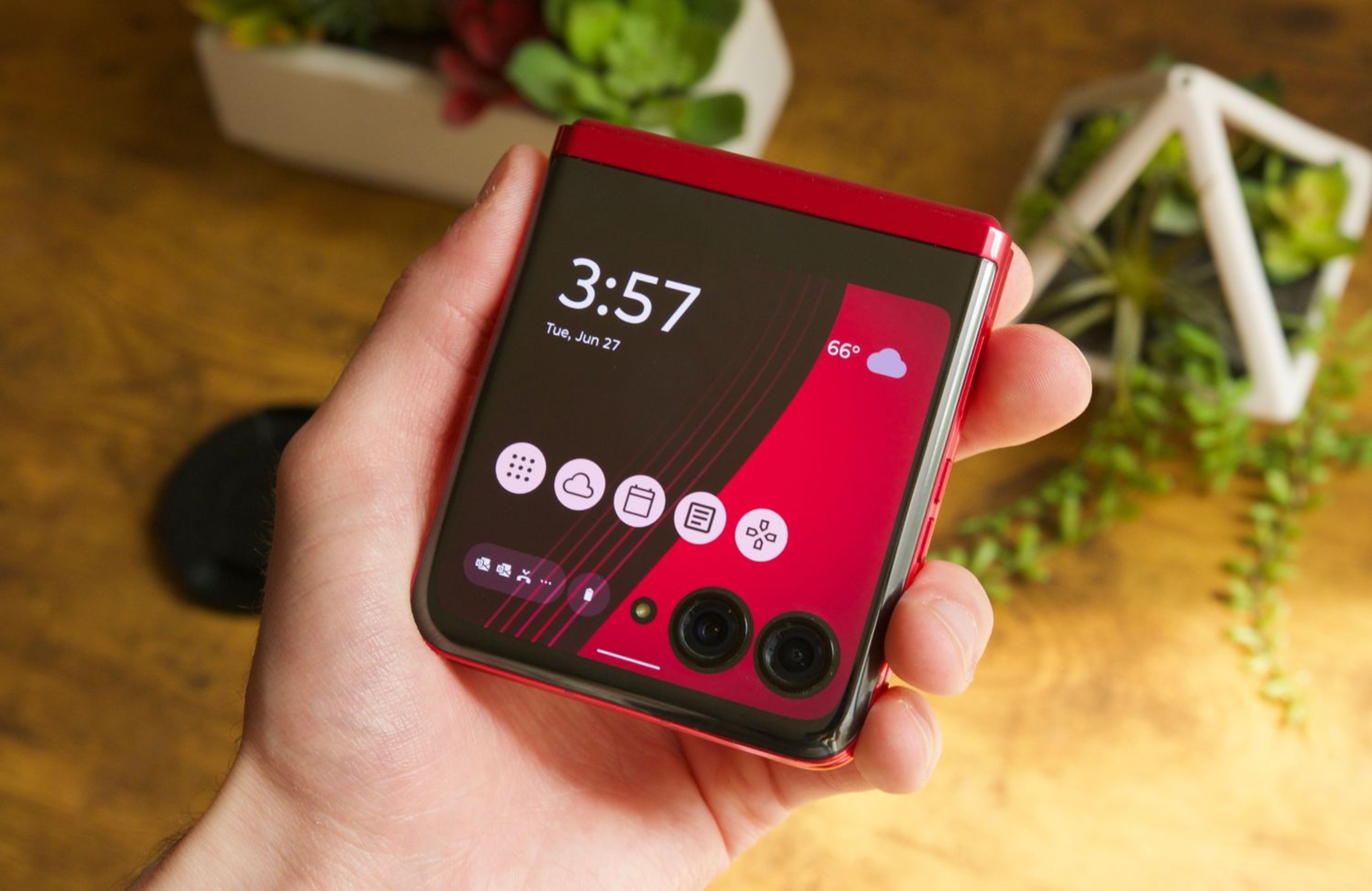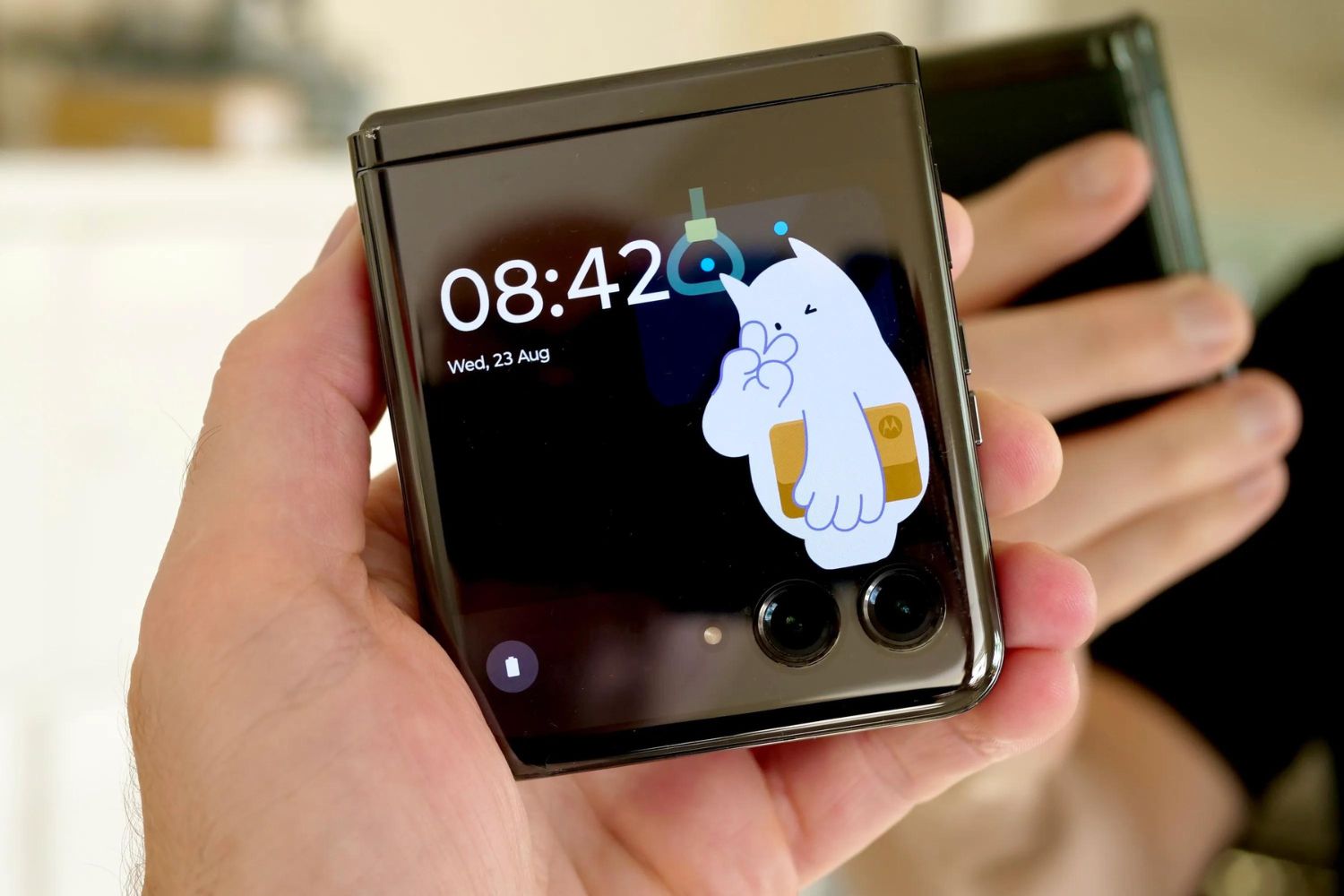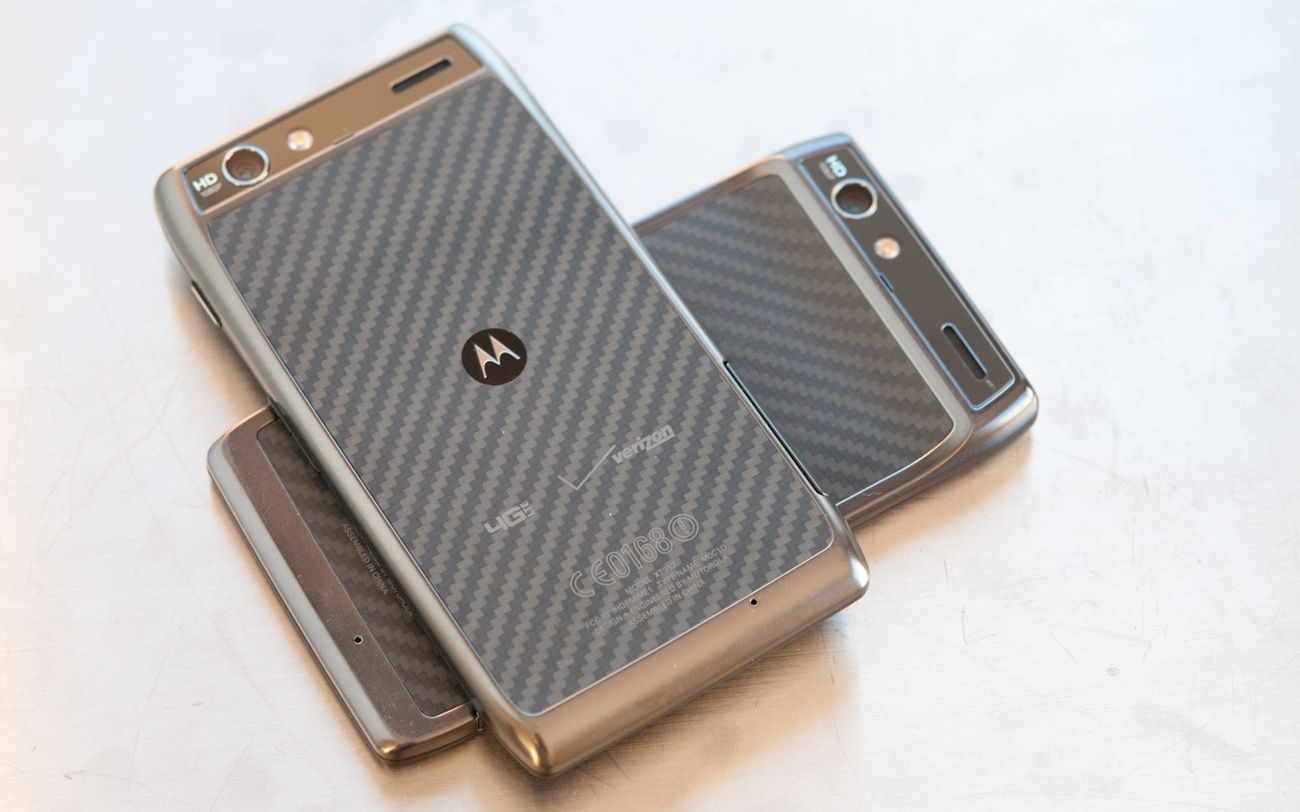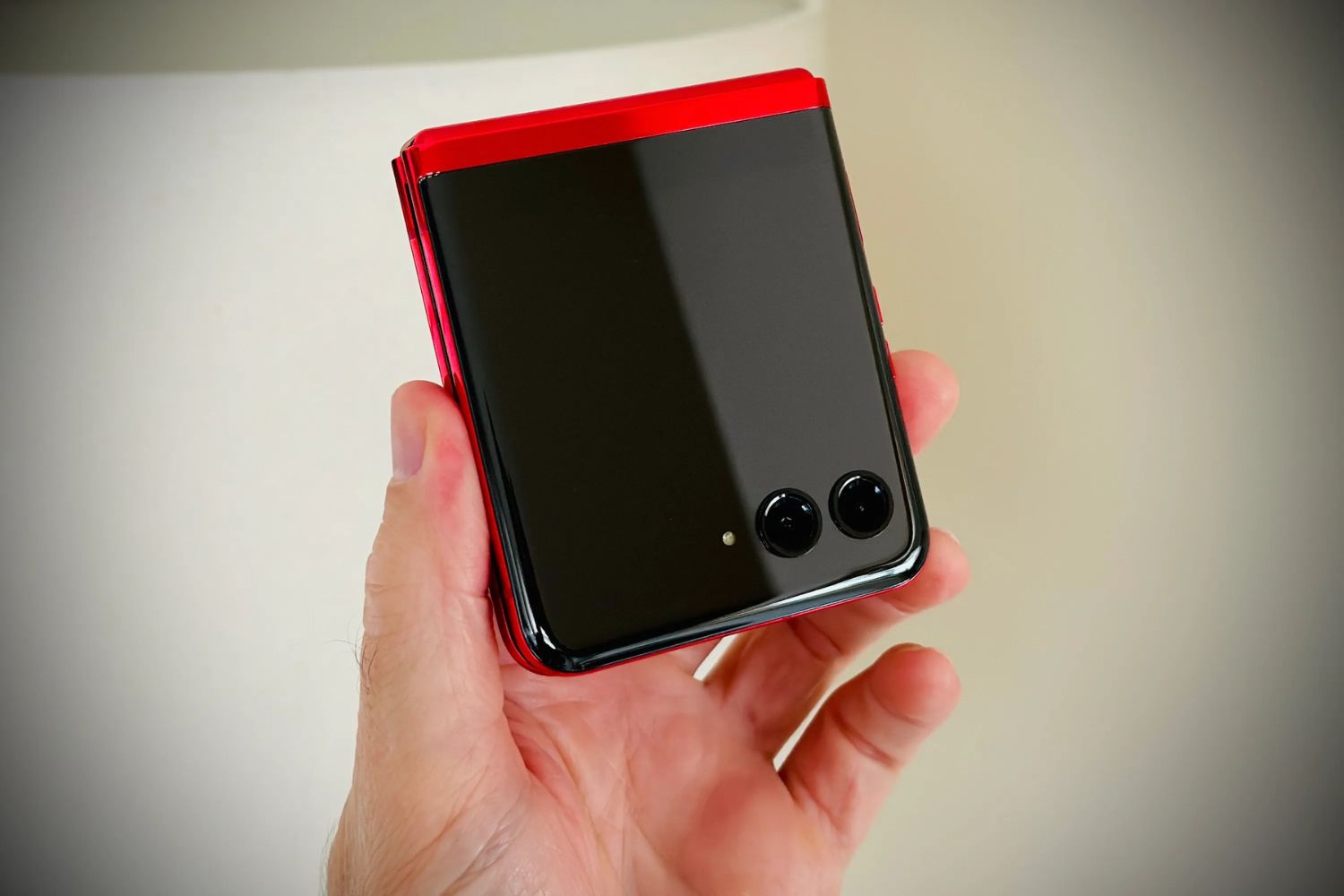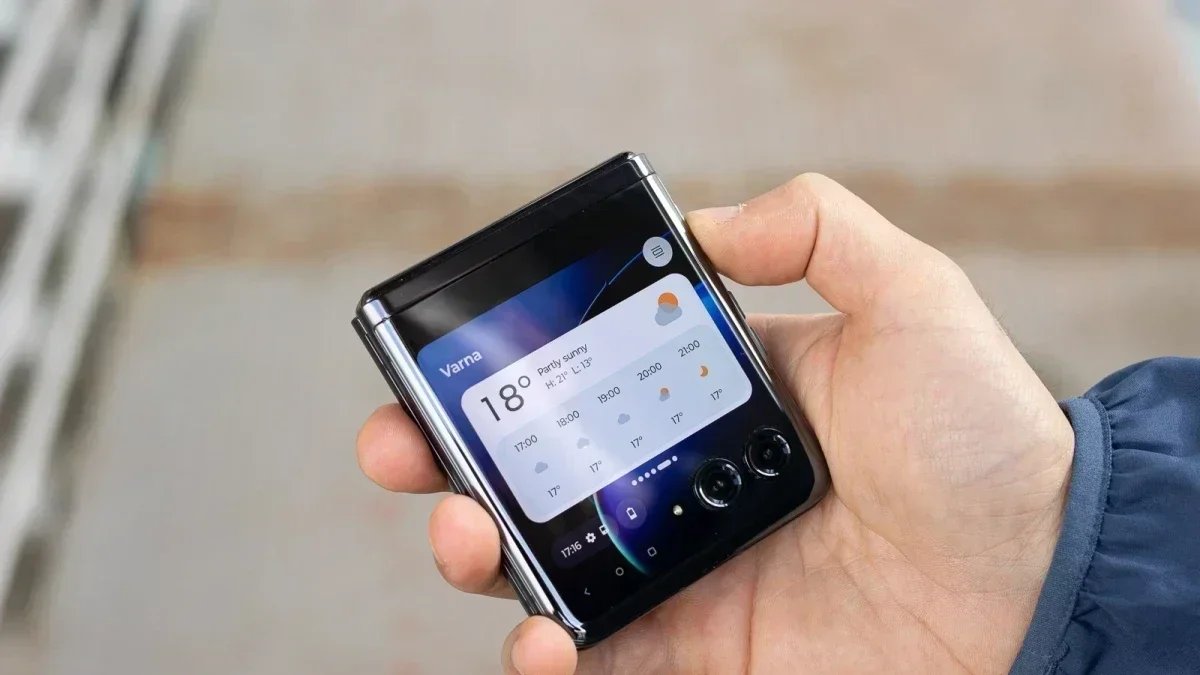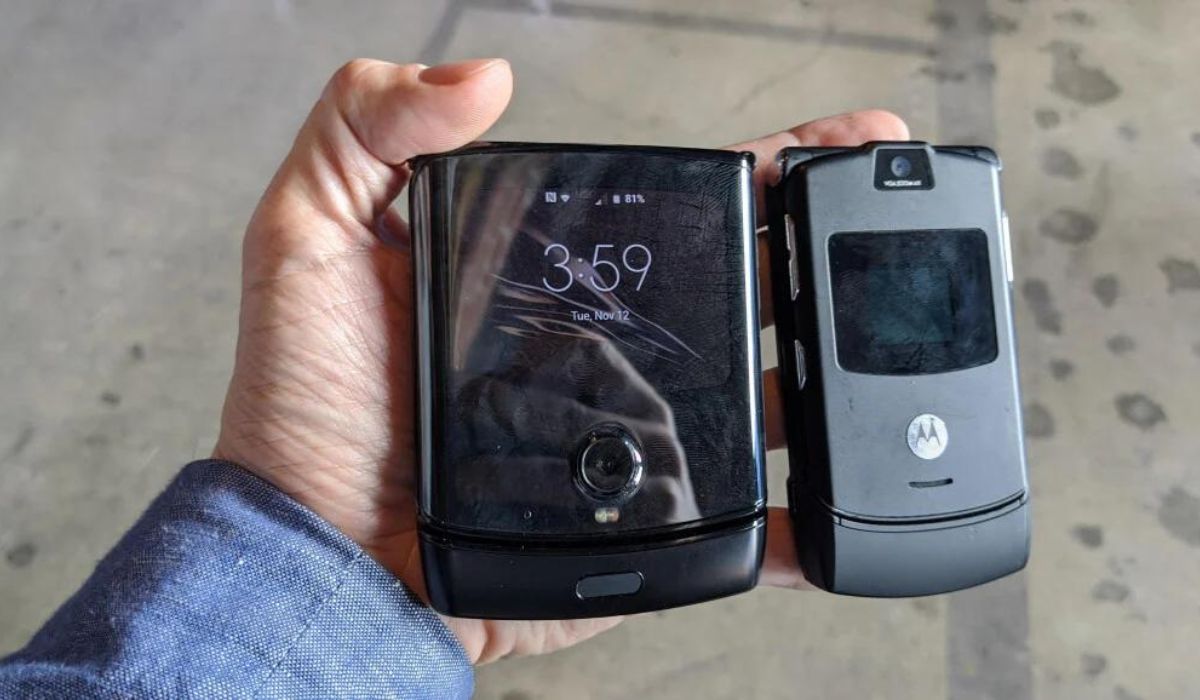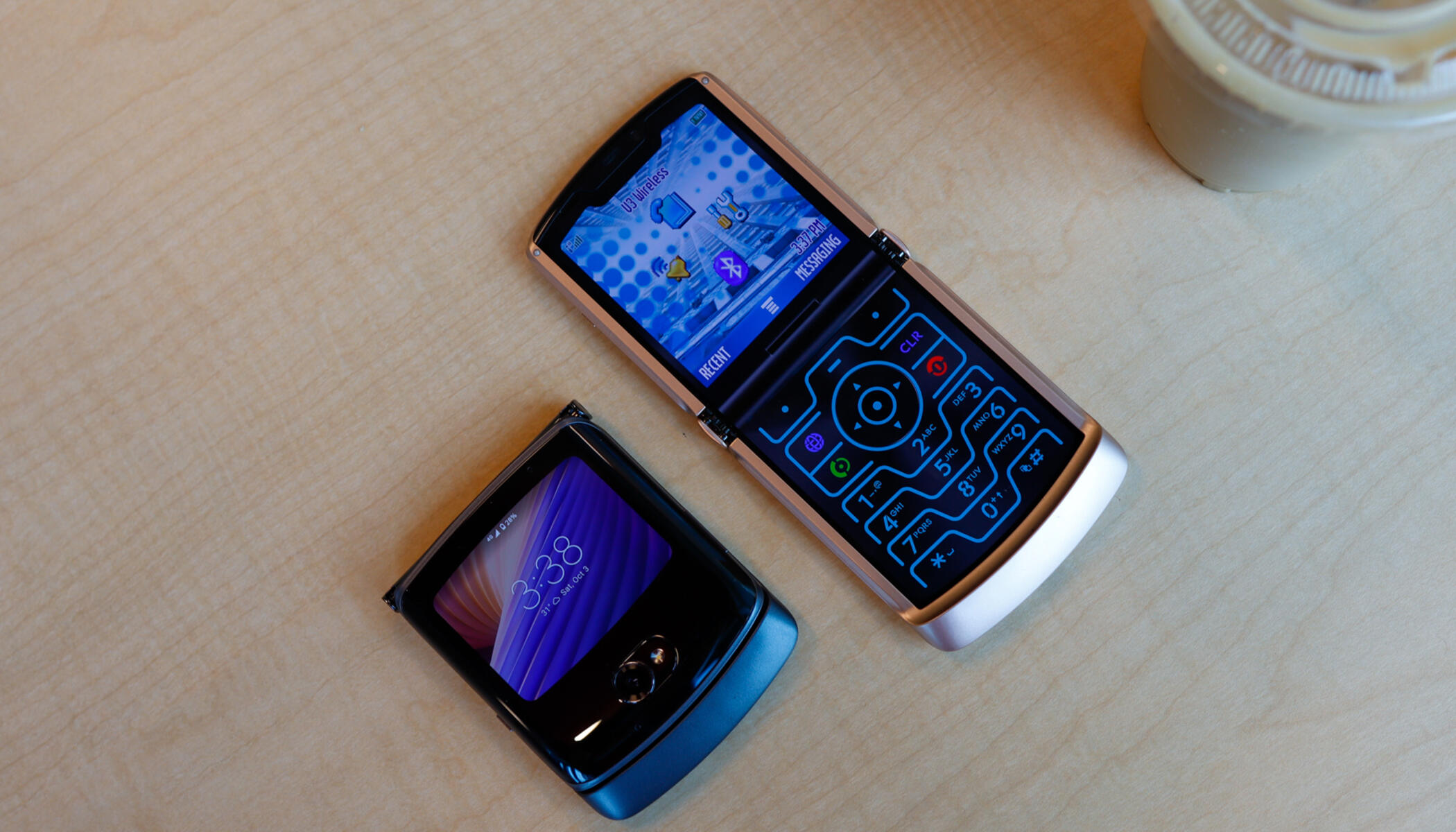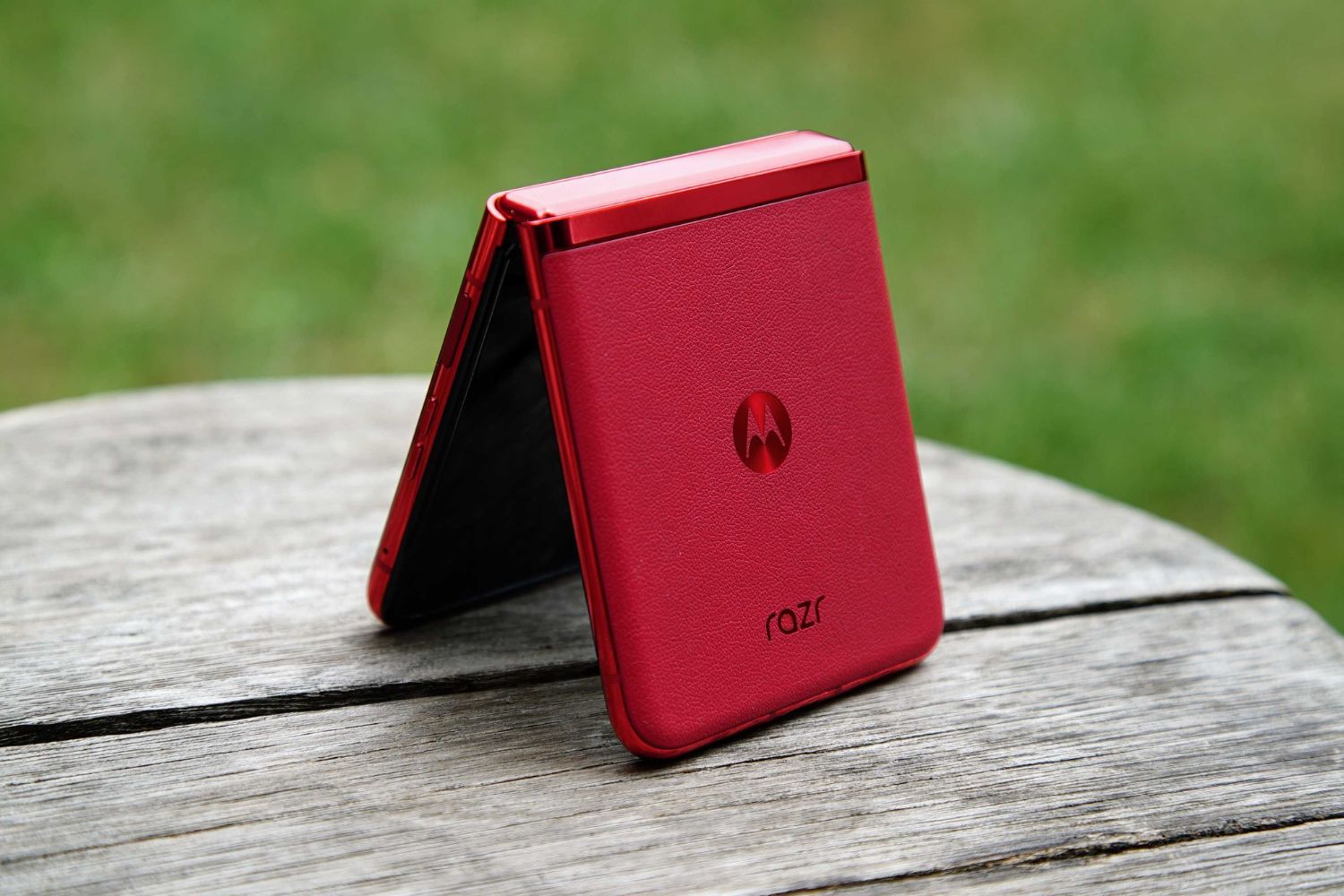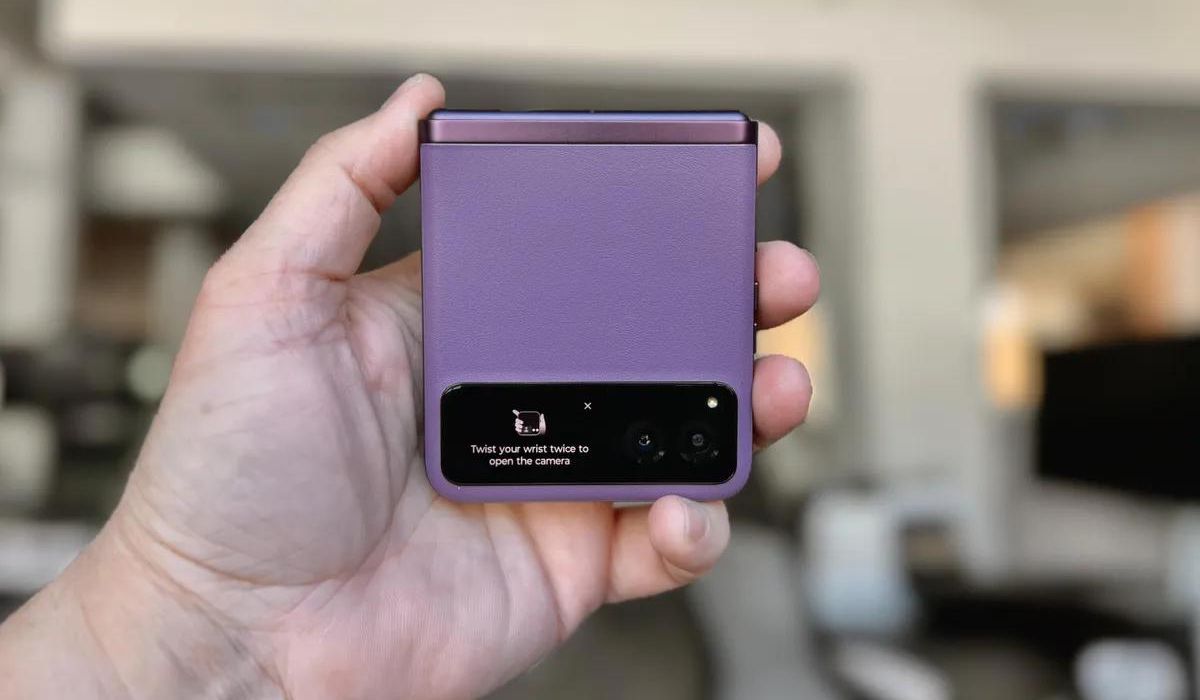Introduction
The Motorola Razr is a sleek and innovative mobile device that seamlessly blends cutting-edge technology with a nostalgic flip-phone design. However, like any electronic device, it may encounter issues that can disrupt its normal functionality. One common problem faced by Motorola Razr users is the device vibrating but failing to turn on. This perplexing issue can be frustrating, but fear not, as there are several troubleshooting steps that can potentially resolve this issue and get your device up and running again.
In this comprehensive guide, we will delve into the various troubleshooting methods to address the vexing problem of a Motorola Razr vibrating but not turning on. By following these steps, you can potentially identify and resolve the underlying issue, allowing you to once again enjoy the seamless performance and convenience that the Motorola Razr offers.
Let's embark on this troubleshooting journey together, as we explore the potential causes and solutions for this perplexing issue. Whether you're a tech-savvy individual or a casual user, the following steps are designed to be accessible and easy to follow, empowering you to take charge of the situation and potentially resolve the issue with your Motorola Razr. So, without further ado, let's dive into the troubleshooting process and work towards restoring your device to its optimal functionality.
Check the Battery
The first step in troubleshooting a Motorola Razr that vibrates but doesn't turn on is to check the battery. A depleted or faulty battery can often be the culprit behind this issue. Begin by ensuring that the device is adequately charged. Connect the device to a power source using the original charger and cable, and allow it to charge for at least 30 minutes. It's essential to use the original charger, as third-party chargers may not deliver the required power output, which can impede the charging process.
If the device fails to respond to charging, attempt using a different power outlet or USB port to rule out potential issues with the power source. Additionally, inspect the charging cable for any signs of damage, such as fraying or exposed wires, as this can impede the charging process.
In some cases, the battery may have become completely drained, causing the device to enter a low-power state. To address this, perform a soft reset by pressing and holding the power button for at least 10 seconds. This can help kickstart the device and initiate the charging process.
If the device still does not show any signs of life after charging, it may be necessary to replace the battery. Contact Motorola support or visit an authorized service center to obtain a genuine replacement battery. Attempting to replace the battery yourself may void the device's warranty and can pose safety risks if not done correctly.
By thoroughly checking the battery and ensuring that it is receiving adequate power, you can eliminate potential charging-related issues and move on to further troubleshooting steps if the problem persists. Remember, a healthy battery is crucial for the proper functioning of your Motorola Razr, and addressing any battery-related issues is a fundamental step in resolving the device's failure to turn on despite vibrating.
Check the Power Button
The power button is a fundamental component of any mobile device, serving as the gateway to its functionality. When encountering the perplexing issue of a Motorola Razr vibrating but failing to turn on, it is crucial to thoroughly inspect the power button and its associated mechanisms. A malfunctioning power button can impede the device's ability to power up, leading to the observed symptoms.
Begin by carefully examining the power button for any physical damage or obstruction. Ensure that the button depresses smoothly and does not feel stuck or unresponsive. Sometimes, debris or dust accumulation around the power button can hinder its operation. Gently clean around the button using a soft, dry cloth to remove any potential impediments.
Next, perform a series of deliberate presses on the power button, paying close attention to any tactile feedback or audible clicks. If the button feels loose or unresponsive, it may indicate an internal issue that requires further attention. In such cases, it is advisable to seek assistance from a qualified technician or authorized service center to assess and potentially repair the power button mechanism.
In addition to physical inspection, it is essential to consider the possibility of a software-related issue affecting the power button's functionality. Software glitches or conflicts can occasionally cause the power button to become unresponsive, leading to the observed symptoms of vibration without powering on. To address this, consider performing a forced restart, which can help reset the device's software and potentially resolve any underlying software-related issues affecting the power button's operation.
If the power button appears to be functioning normally and no physical or software-related issues are detected, it may be beneficial to attempt an alternate method of powering on the device. Some Motorola Razr models feature a dedicated fingerprint sensor that can also serve as a power button. If applicable, try using the fingerprint sensor to power on the device and observe if it responds accordingly.
By meticulously examining the power button and considering both physical and software-related factors, you can gain valuable insights into the potential causes of the device's failure to power on despite vibrating. This thorough assessment sets the stage for further troubleshooting steps, allowing you to methodically address the issue and work towards restoring the device to its optimal functionality.
Perform a Forced Restart
When encountering the perplexing issue of a Motorola Razr vibrating but failing to turn on, performing a forced restart can serve as a pivotal troubleshooting step to potentially resolve the underlying issue. A forced restart, also known as a hard reset, is a valuable technique that can help reset the device's software and address any transient glitches or software-related impediments that may be hindering its normal functionality.
To initiate a forced restart on the Motorola Razr, follow these straightforward steps:
-
Press and hold the Power button: Locate the power button on your device, typically situated along the device's edge or side. Press and hold the power button for at least 10-15 seconds, ensuring a sustained and deliberate press.
-
Observe for device response: As you continue to hold the power button, observe the device for any signs of activity. You may notice the screen turning on, the device vibrating, or other indications that the forced restart process has been initiated.
-
Release the power button: After holding the power button for the specified duration, release the button and allow the device to complete the forced restart process. It is normal for the device to power off and then restart during this procedure.
By performing a forced restart, you are effectively triggering a comprehensive software reset, which can help eliminate any temporary software hiccups or conflicts that may be preventing the device from powering on despite vibrating. This method is particularly effective in addressing issues related to the device's power button functionality, as it provides a clean slate for the device's software to initialize and resume normal operation.
It is important to note that a forced restart does not erase any user data or settings on the device. Instead, it focuses on resetting the device's software and addressing potential software-related issues that may be contributing to the observed symptoms. Therefore, it is a safe and non-intrusive troubleshooting step that can be performed with confidence.
After performing a forced restart, allow the device to complete the reboot process and observe if it successfully powers on. If the device responds positively and boots up as expected, it indicates that the forced restart has potentially resolved the underlying issue. However, if the problem persists, it may be necessary to explore additional troubleshooting steps to further diagnose and address the root cause of the device's failure to turn on despite vibrating.
By incorporating a forced restart into your troubleshooting process, you are leveraging a powerful and accessible technique to potentially overcome the perplexing issue at hand. This methodical approach empowers you to systematically address the problem and work towards restoring your Motorola Razr to its optimal functionality.
Charge the Device
Ensuring that your Motorola Razr has an adequate charge is essential for its proper functionality. When faced with the frustrating scenario of the device vibrating but not turning on, addressing potential charging-related issues is a fundamental troubleshooting step. By methodically assessing and addressing the device's charging status, you can potentially eliminate this factor as a cause of the observed symptoms.
Commence the troubleshooting process by connecting your Motorola Razr to a power source using the original charger and cable. It is crucial to utilize the original charger, as third-party chargers may not deliver the required power output, which can impede the charging process. Allow the device to charge for at least 30 minutes, providing it with ample time to replenish its battery.
If the device fails to respond to charging, consider trying a different power outlet or USB port to rule out potential issues with the power source. Additionally, inspect the charging cable for any signs of damage, such as fraying or exposed wires, as this can impede the charging process.
In some instances, the battery may have become completely drained, causing the device to enter a low-power state. To address this, perform a soft reset by pressing and holding the power button for at least 10 seconds. This action can help kickstart the device and initiate the charging process.
If the device still does not show any signs of life after charging, it may be necessary to consider the possibility of a faulty battery. In such cases, it is advisable to contact Motorola support or visit an authorized service center to obtain a genuine replacement battery. Attempting to replace the battery yourself may void the device's warranty and can pose safety risks if not done correctly.
By thoroughly checking the battery and ensuring that it is receiving adequate power, you can eliminate potential charging-related issues and move on to further troubleshooting steps if the problem persists. Remember, a healthy battery is crucial for the proper functioning of your Motorola Razr, and addressing any battery-related issues is a fundamental step in resolving the device's failure to turn on despite vibrating.
By meticulously assessing and addressing the device's charging status, you are laying the groundwork for a comprehensive troubleshooting process, empowering you to potentially resolve the issue and restore your Motorola Razr to its optimal functionality.
Check for Physical Damage
Carefully inspecting your Motorola Razr for physical damage is a crucial step in troubleshooting the issue of the device vibrating but failing to turn on. Physical damage, whether visible or internal, can significantly impact the device's functionality and may manifest as the observed symptoms. By methodically examining the device for any signs of damage, you can gain valuable insights into potential underlying issues and take appropriate steps to address them.
Begin the inspection by visually examining the exterior of the device for any visible signs of damage, such as cracks, dents, or scratches. Pay particular attention to the screen, casing, and edges, as these areas are susceptible to damage from accidental drops or impacts. Even minor damage can potentially affect the device's internal components and disrupt its normal operation.
In addition to external inspection, consider the possibility of internal damage that may not be immediately visible. Internal components such as the battery, circuitry, and connectors can be impacted by physical trauma, leading to issues with the device's functionality. If you have recently dropped the device or exposed it to physical stress, it is essential to consider the potential effects of such incidents on its internal components.
Furthermore, inspect the device's ports and connectors for any signs of damage or obstruction. Dust, debris, or foreign objects lodged in the charging port or headphone jack can impede the device's functionality and may contribute to the observed issue. Use a flashlight or magnifying glass to carefully examine these areas, ensuring that they are clean and free from any obstructions.
If you identify any visible damage or suspect internal trauma, it is advisable to seek assistance from a qualified technician or authorized service center. Attempting to address internal damage without the necessary expertise can exacerbate the issue and may void the device's warranty. A professional assessment can provide a comprehensive understanding of the extent of the damage and the required steps to restore the device to optimal functionality.
By meticulously checking for physical damage, both externally and internally, you are taking proactive measures to identify potential factors contributing to the device's failure to turn on despite vibrating. This thorough assessment sets the stage for informed decision-making and empowers you to pursue the most effective troubleshooting steps to address the underlying issues.
Incorporating a detailed inspection for physical damage into your troubleshooting process demonstrates a proactive approach to resolving the issue at hand. By gaining clarity on the device's condition, you are better equipped to make informed decisions and potentially restore your Motorola Razr to its optimal performance.
Update the Software
Ensuring that your Motorola Razr is running the latest software is a crucial step in troubleshooting the issue of the device vibrating but failing to turn on. Software updates often contain bug fixes, performance enhancements, and optimizations that can address underlying issues and improve the device's overall stability. By methodically updating the device's software, you can potentially eliminate software-related impediments that may be contributing to the observed symptoms.
To initiate a software update on your Motorola Razr, follow these straightforward steps:
-
Connect to a stable Wi-Fi network: Before proceeding with the software update, ensure that your device is connected to a stable Wi-Fi network. Software updates are typically large in size and may consume a significant amount of data, making a Wi-Fi connection essential to avoid excessive cellular data usage.
-
Access the Settings menu: Navigate to the Settings app on your device, typically represented by a gear icon. Scroll down and select "System" or "About phone" to access the system-related settings.
-
Check for software updates: Within the "System" or "About phone" menu, locate and select the "System updates" or "Software update" option. The device will then initiate a check for available updates.
-
Download and install the update: If a software update is available for your Motorola Razr, follow the on-screen prompts to download and install the update. Ensure that the device is adequately charged or connected to a power source during the update process to prevent any interruptions.
-
Reboot the device: Once the software update is successfully installed, the device may prompt you to reboot. Proceed with the reboot process to allow the updated software to take effect.
By performing a software update, you are effectively leveraging the latest enhancements and optimizations provided by Motorola. These updates are designed to address known issues, improve system stability, and enhance the overall user experience. Additionally, software updates can resolve software-related conflicts or glitches that may be contributing to the device's failure to turn on despite vibrating.
After completing the software update, observe the device's behavior and check if it successfully powers on. If the problem persists, it may be necessary to explore additional troubleshooting steps to further diagnose and address the root cause of the issue. However, by ensuring that your device is running the latest software, you are proactively addressing potential software-related factors and working towards restoring your Motorola Razr to its optimal functionality.
Incorporating a software update into your troubleshooting process demonstrates a proactive approach to resolving the issue at hand. By leveraging the latest software enhancements, you are taking a significant step towards potentially overcoming the observed symptoms and ensuring the smooth operation of your Motorola Razr.
Contact Motorola Support
If all the previous troubleshooting steps have been diligently followed and the issue of your Motorola Razr vibrating but not turning on persists, it may be time to seek assistance from Motorola support. Contacting Motorola support provides access to specialized assistance from knowledgeable professionals who can offer tailored solutions to address the specific issue affecting your device.
To initiate contact with Motorola support, you can explore several convenient channels designed to provide timely and effective assistance. One of the primary avenues for seeking support is through the official Motorola website. Navigating to the support section of the website allows you to access comprehensive resources, including troubleshooting guides, FAQs, and community forums where users and experts share insights and solutions.
Additionally, the official Motorola support website typically features a dedicated support portal that enables users to submit support tickets or initiate live chat sessions with support representatives. These interactive support options can facilitate real-time communication with knowledgeable personnel who can guide you through advanced troubleshooting steps or recommend further actions to address the issue.
Another valuable resource for seeking support is the official Motorola customer service hotline. By contacting the customer service number provided by Motorola, you can directly engage with support representatives who can provide personalized assistance and guide you through the troubleshooting process. Be prepared to provide detailed information about the issue and the steps you have already taken to troubleshoot the device, as this can expedite the support process and ensure that the support team has a comprehensive understanding of the situation.
In some cases, Motorola may offer in-person support services through authorized service centers or retail locations. These service centers are staffed by trained technicians who possess the expertise to diagnose and address complex issues affecting Motorola devices. Visiting an authorized service center allows for a hands-on assessment of the device and may lead to expedited solutions, including potential repairs or replacements if necessary.
When reaching out to Motorola support, it is advisable to have essential information readily available, including the device's serial number, purchase details, and a comprehensive description of the issue. Providing this information can streamline the support process and enable the support team to offer targeted assistance tailored to your specific situation.
By contacting Motorola support, you are leveraging the expertise and resources of the manufacturer to address the perplexing issue affecting your Motorola Razr. This proactive approach demonstrates a commitment to resolving the issue and ensures that you have access to the necessary support to restore your device to its optimal functionality.
Remember, seeking support from Motorola is a proactive step towards resolving the issue and ensuring that your Motorola Razr continues to deliver the seamless performance and reliability that it is renowned for.







